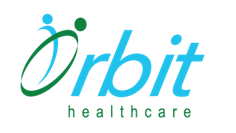To Build or Not To Build
Insurance Capture & Benefit Verification Automation
A Guide For Insurance Card Capture & Benefit Verification Automation
There are two ways to get insurance verification automation solutions: build them yourself, or partner with someone who specializes in providing insurance card capture and verification automation related solutions. Which option makes the most sense?

To Build or Not to Build? A Guide For Insurance Card Capture & Benefit Verification Automation
There are two ways to get insurance verification automation solutions: build them yourself, or partner with someone who specializes in providing insurance card capture and verification automation related solutions. Which option makes the most sense?
There’s No Time To Lose In Acquiring An Insurance Card Capture System
- The Cost Of Insurance Errors And Denials Impact Healthcare Greatly
- $262 billion in insurance denials per year
- $30 – $71 per lost claim in additional expenses
- 65% of denied claims are never reworked, although 66% are recoverable
- Unfortunately, existing options for insurance capture leave much to be desired:
- Paper and clipboard (100+ years old)
- Manual labor has an error rate of 4.2%
- Digital intake (~60 years old)
- Spending just 5 hours per week on repetitive or manual tasks wastes 260 hours and 6.5 work weeks per year
- OCR intake (~30 years old)
- Many have a low success rate (60%)
- Paper and clipboard (100+ years old)
- Older systems don’t offer the tools needed to succeed
- They can help with:
- Card intake
- Image processing
- Extraction processes
- But most systems can’t help with:
- Accurately identifying payers and plans from images
- Routing the payer, validating the accuracy of payer, and extracting the plan from images
- Insurance COB ( Coordination of Benefits) & Insurance Carve-Outs
- They can help with:
- Mapping the payer and plan printed on the insurance card to the payer in the EMR/PM systems
- It’s time to pursue a modern solution and replace both inefficient software and processes
So do you build, or do you buy? Let’s look at the pros and cons.
Building AI enabled Insurance capture & Verification Systems
- Cost of Ownership
-
- Infrastructure
- Team members
- Maintenance (Updates and fixes)
- Training and upskilling
- Technical and Knowledge Requirements
-
- AI models
- OCR
- HIPAA EDI X12
- HL7
- Web Services
- RPA ( Payer Portal Scraping)
- Conversational AI ( Payer outbound call automation)
- Compliance and regulatory management
- Specialized data encryption practices
- Scaling management
- AI models
- Changing payers and plans landscape
-
- Requires a team to continuously update payer new plans and mappings
- Retrain AI Model to accommodate the changes
- Risks
-
-
- High upfront costs: Designing, building, testing, and implementing could cost hundreds of thousands of dollars (anywhere from $1,000,000 – $5,000,000)
- High lifetime costs: Maintenance, updates, fixes, and enhancements cost thousands over the life of the system (3x the cost of deployment)
- Time delays: It may take years to develop a solution, then years more as the system grows and matures (6 to 9 months on the short end)
- Complexity: It takes a skilled team of IT professionals to build for payer routing, payer mapping, verification automations, insurance carveout identifications, COB, and more (complex software has a cost disadvantage of 35%)
- High risks for credibility: You cannot leave any room for error, either for verification mistakes or bad actors. 46% of businesses lose credibility after a data breach (and 57% of customers will stop doing business with you after a cyberattack)
-
- Rewards
-
- Proprietary software: Your insurance card capture system is owned by you and you alone
- Customization: You can achieve specific outcomes by building specific workflows
Building a system means there’s capital outlay and development/refinement for years. If this isn’t something you can afford, buying a system makes more sense for you
Buying Insurance Card Capture Systems
- Costs
-
- API subscriptions
- Transactions
- Technical and Knowledge Requirements
-
-
- None other than integration expertise; these are handled on your behalf
-
- Risks
-
-
- Partner fit: If you don’t evaluate your vendor upfront, you may not be satisfied with their speed or responsiveness
-
- Rewards
-
- Dedicated team: Software engineers perform maintenance updates, and repairs (saves up to 60% in support costs)
- Low overall costs: No need to build a solution from scratch (saving time and effort for your team)
- No delays: Install immediately and begin verifying insurance right away (a few days or weeks)
- Intuitive: Simple for your office staff while slashing repetitive tasks (save up to $14,560 a year per employee)
If you like the idea of a customized system while buying a ready-made solution to start verifying insurance fast, you’re looking for Orbit’s APR AI Powered APIs
Why Orbit Is The Best Of Both Worlds
- Orbit uses an AI model trained by domain experts on 4,000+ players and 20,000+ plans
- Our algorithm validates information and verify coverage in 5 seconds or less
- Orbit Is:
- Robust and fully-featured
- Initiates automatic calls to payers and secondary/primary callers
- Future-proof and efficient
- 98.5% payer identification rate
- We don’t just extract data
- We validate, verify, and map to the EMR/RCM payer and plan type in real-time
- Orbit also reads more than just insurance cards
- Online wallets images
- Paper printouts
- Screenshots on phones
- Referral Letters
- Lab Requisition forms
- Robust and fully-featured
- 40% to 60% savings in current costs are achieved by organizations automating insurance card capture and verification with Orbit
Contact Orbit Healthcare to see how much you could save
Sources
https://www.hfma.org/topics/hfm/2018/september/61778.html
https://journal.ahima.org/page/claims-denials-a-step-by-step-approach-to-resolution
https://www.rxnt.com/the-financial-impact-of-denied-claims-in-medical-billing/
https://www.ncbi.nlm.nih.gov/pmc/articles/PMC5171496/4
https://academic.oup.com/jamia/article/26/3/269/5287977#
https://www.nethealth.com/blog/the-history-of-electronic-health-records-ehrs/
https://www.uscloud.com/blog/embracing-third-party-software-support-and-maintenance/
https://www.formstack.com/blog/workflow-automation-time-savings
https://www.scnsoft.com/software-development/costs
https://www.gomarketbox.com/blog/software-maintenance-costs-and-factors
https://dspace.mit.edu/bitstream/handle/1721.1/49011/softwarecomplexi00sloa.pdf;sequence=1
https://digistor.com/what-happens-to-a-companys-reputation-after-a-data-breach/
Supplied Orbit documentation
